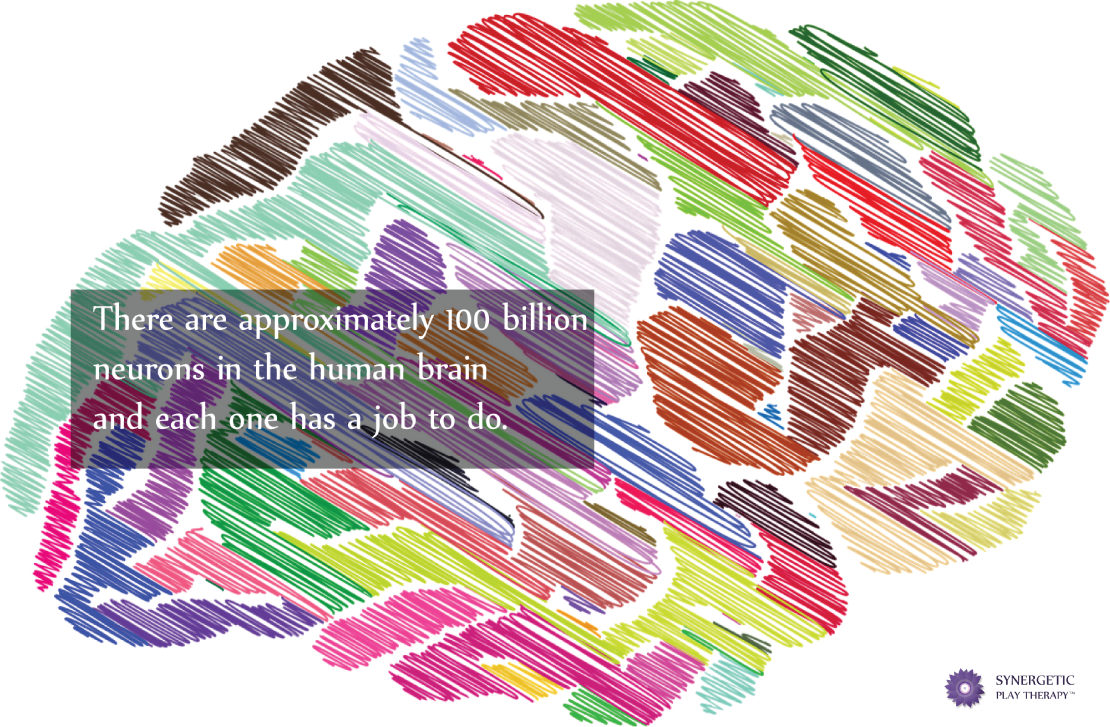By Lisa Dion, LPC, RPT-S
The brain, for all its greatness, is also highly susceptible to experiences that register as traumatic – after all, one of its main jobs is to assess the environment for threats. The brain changes that occur as a result of these experiences can cause long-lasting effects during youth, but they can also carry over to adulthood; in short, perceiving trauma as children can set the stage for becoming a traumatized adult.
What does this mean for the brain and behaviors? Some of the perceived traumas manifest in the impairment of the anterior cingulate cortex, an impairment that leaves emotions less regulated and mood disrupted. The end result can range from impulse disorders to anxiety, from depression to suicide. It can also lead to substance abuse later in life.
All of the above has been known for quite some time, but research is now helping us see the details of what is actually being impacted in these areas of the brain.
In our brains, our neurons contain a thick, fatty coating called myelin. This myelin covers the axon of some nerves cells and helps the brain do what it does best: communicate with all aspects of itself and the body. It speeds up the transmission of the electrical signals being sent. Myelin builds as people grow and continues to do so until a child reaches early adulthood.
And when the myelin is damaged, white matter abnormalities appear.
Scientists at the McGill University Group for Suicide Studies decided to look at brains of people who have passed away under a microscope to investigate these abnormalities further and their discoveries were quite telling. They discovered that the myelin thickness of many nerve fibers was reduced in the brains of people who had experiences, as children, that registered as traumatic (we already knew this). But, what’s more, the myelin generation and maintenance processes were also changed.
They discovered that certain larger axons grew in diameter too. All of this was enough to lead scientists to conclude that the changes in the axons and in the myelin disrupt the areas of the brain linked to emotional regulation, the reward system, and satisfaction. In other words, these changes alter how a person processes their feelings. And that, in turn, alters behavior.
Ultimately, these findings help confirm for us what we have thought for years – that experiences perceived as traumatic in the young can manifest into literal brain abnormalities in the old and every age in between.
There’s still much to learn, of course – that could be neuroscience’s tagline. The same researchers who conducted this study are planning to explore their studies even further.
Re-Patterning the Brain
The above shows us that abnormalities in the brain can start early in life, but does this mean that a child who has registered events as traumatic is guaranteed to turn into a traumatized adult? No – in part, that’s why play therapy exists.
As play therapists, we know that it’s not really trauma that wounds a child – it’s the perception of that trauma that activates the changes in the brain. That’s why helping children integrate their challenging experiences and helping them change their perceptions eases the damage. When we change our perceptions, we change brains and our behaviors, literally.
By working with children to integrate, we help the re-myelination process. When we allow kids to get in touch with their perceived trauma, we allow them to heal. When we repattern behaviors, we repattern the brain’s wiring. This decreases the risk of lasting damage.
The brain is always open to suggestion, both good and bad. Just as it can be impaired, it can be repaired too.
Interested in credits and courses delivered to your living room? Take a look at all our classes, available on our learning site.





